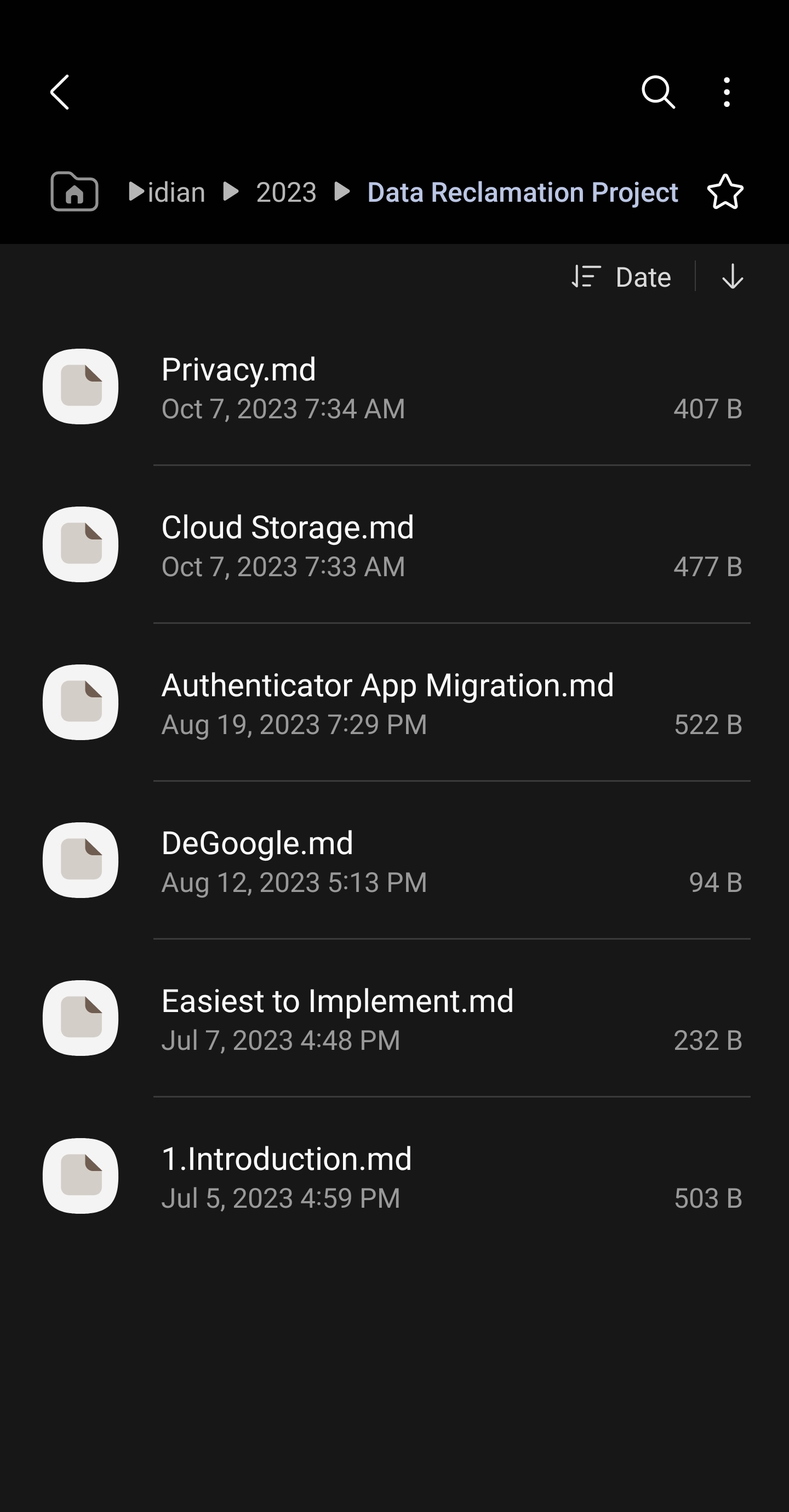

That looks nice! I tried to my brain wrapped around Restic CLI (and others) and just didn’t click for my smooth brain. I’ll have to try this.


That looks nice! I tried to my brain wrapped around Restic CLI (and others) and just didn’t click for my smooth brain. I’ll have to try this.


How incredibly timely!
I’ll have to give it a go with a copy of my vault.


Coming back to this, I just realized I have Seafile syncing my Obsidian vault already. I know you said you’re using it for Backup, but have you tried to use it as the only sync solution for Obsidian? I like it so much because of how fast it is, so if it works well, I may just do that once my membership expires.


I’ve shit-talk NC so much on here and other forums but for some reason kept feeling compelled to try to make it work. I’ve tried a few of the Community Docker templates available on Unraid “store” as well as AIO. I’ve had issues with all of them. Then gave NextcloudPi a try on a spare Pi 4 (installed a SSD as boot instead of microSD) and it works much better. It’s still much slower than I think it should be, but this version is far and away more responsive than the others.
Seafile is a beast of an app that syncs and performs incredibly fast. Some folks won’t use it due to the git-like chunks it parses your data into on the server end (this is what accounts for the speed from what I’ve read). I understand the concerns in that regard, but I still like it and I have my own way to mitigate that concern.


I’ll give it a go. The plain md files is exactly why I went with Obsidian in the first place. I just haven’t found a FOSS alternative that I like as much. Closest is Acreom but it’s not yet open source, on the roadmap though.


Obsidian is my favorite thus far. It sucks at checklists/Todo though. So I use Quillpad as a shopping list keeper and Tasks.org as my task management/Todo, both syncing to my self hosted Nextcloud instance.
I’m still on Obsidian Sync because I couldn’t get Syncthing to work reliably, but that was very early in my selfhosting journey, so I will try again.
Not self hosted, but Tabby is the closest I’ve found. But I still don’t like it as much as Termius. And from what other, more experienced people have said, Tabby is bloated, requiring way more system resources than a terminator emulator app should.
Also, I asked a related question here if you want to read some other suggestions.


That great, thanks for the info. I was able to get Wireguard setup in unraid but they make it pretty easy, so I didn’t have a problem. I just didn’t think about connecting to the entire network, not just the server.


Yeah I know some of those words…
I’m still a newb but I’ll have a look at that link, thanks!


Well, I didn’t realize that was an option to be honest, lol. I am having some issues with that box at the moment though so having a pi or my router acting as the gateway appealed to me with it’s longer uptime


Most services are on the unraid box. But I had a pi running Pi-hole for a long time (switched to adguardhome) and wanted that separate from the main server in case it went down. Pis boot up a lot faster than my server hardware and then you still need to start the array and mount drives. Having AGH on a Pi as primary DNS means minimal internet outages caused by my tinkering. I was given the 4 and put it in a really cool case that can fit a M.2 or 2.5" SSD and boot from it. So that is NextcloudPi and AGH. The 3 is because my 3d printer is nowhere near a LAN connection and 3 has WiFi. The 4 is sitting next to my router. We won’t mention the 1B I’ve been messing with too…


That’s looks handy. Thanks!


I ran Pi-hole for years. Switched to adguardhome running on 2 servers (primary and secondary) with AGH sync keeping the two instances identical. I like the UI better, dns rewrites, and the ability to simply block services entirely with a single click.


Immich and Duplicacy both run on my unraid server. Duplicacy just watches the Immich pics folder and backs that up nightly.
Have you looked at the contents of those md files? In addition to creating its own hexadecimal file name, it appends the text with a bunch of metadata info. If you were to then take that folder of notes to any other markdown editor like Obsidian, it would be a mess to organize. That is why I’m a stickler for file format agnosticism. There is no vendor lock in and more importantly, no manipulation of the text filenames or contents.
Screenshot of my phone copy of the Obsidian vault directory as an example:

I’d rather backup a stack of plain text files, personally. So Obsidian for me.
Not every one stores the files as plain text files in markdown format like Obsidian. Logseq does I believe, but Joplin stores it all in database files which require an export should you decide to leave that app in favor of a other. With Obsidian you just point the new app at the folders full of .md files and away you go. That was the main selling point for me.
Dang, that’s too bad. It really is the best alternative out there.
No problem. If you do ever want to get it running I believe it’s in the RunTipi store. That solution is similar to Yunohost in that it aims to make standing up a server with several services easy and available with a “single” click. I tried it and it’s pretty neat. Only thing I didn’t like is how updates to the apps themselves were handled.
I guess I never thought of this sort of option. I run Calibre in a docker container on my unraid server. Any books I add are sent over via FTP from whatever device I’m on at the time. I do still have to go into the Calibre instance and add the book. I believe there’s a way to have it watch a folder for new items but not sure.